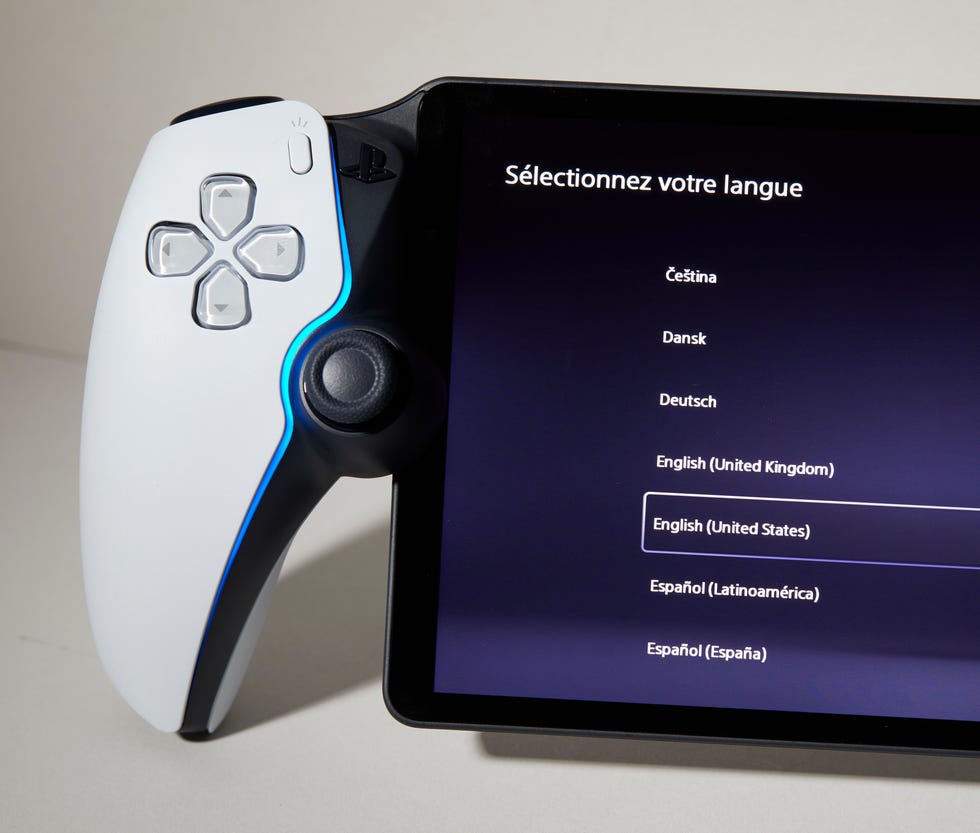Nearly a year after its release, I’ve seen virtually no marketing for the PlayStation Portal. Yet it’s selling like hotcakes. I had to find out what I was missing out on. Is this a product of the Sony propaganda machine or something worth buying? After a month with PlayStation’s newest handheld, I’ve seen how it impresses and where it disappoints.
But first, let’s talk about the PSP, the PlayStation Portable. In 2005, Sony released its first handheld console, and since then it’s become a classic. It was the first portable device that promised console-quality 3D games on the go. It was celebrated for its library (and how easy it was to hack), even when it failed to live up to this promise. Nearly two decades after the PSP—and 12 years after its successor, the PlayStation Vita—Sony has reentered the handheld race. Just not in the way you might think.
Sony released the PlayStation Portal in an era when the dream of taking your PC and console games on the go is fully realized. Devices like the Steam Deck and ROG Ally do that very thing, and they do it quite well. It would make sense for Sony to release a competitor, one with which you can play PlayStation exclusives like Final Fantasy VII Rebirth and God of War: Ragnarök anywhere you are. But Sony didn’t do that…. They made this instead.
At $199, the PlayStation Portal is a great value for the tech, but its use case is remarkably limited. I wanted to love it, and as a piece of hardware I do, but I fear my streaming issues aren’t an isolated incident. If you want to pony up for a Portal, I recommend you do it only if you have a vast PS5 library and scorching-fast home Internet.
Hardware: An Almost Perfect First Stab
The Portal is a dedicated remote-play device that takes the form factor of a PS5 DualSense controller. Imagine cutting a DualSense in half and splicing a screen between the halves. That’s exactly what this is. Using PlayStation’s remote-play feature, you can stream any game you are playing on your PS5 directly to the Portal, as long as you are on the same WiFi connection. That caveat is a big deal.
As a piece of hardware, the PlayStation Portal impressed me. The eight-inch touch screen is roomy (not too big) and supports gameplay in 1080p at up to 60 frames per second. It’s a great controller in the first place, and now there’s a pretty damn good screen in the middle.
Most of the impressive (and gimmicky) features of the DualSense carry over to the Portal—including its advanced haptic feedback, adaptive triggers, built-in microphone, and overall ergonomics. The two things it’s lacking are a speaker and a touchpad. The lack of a speaker is mostly no biggie—even though I tested the only game that actually uses that feature of the controller, GOTY 2024 contender Astro Bot.
The real fumble with this device is that the touchpad is replaced by an unreliable touch-screen interface. Tap the screen and two transparent squares will pop up to represent the left and right sides of the touchpad. In theory, these work.
In practice, they don’t. The Wired reviewer noted this made Alan Wake 2 unplayable. I didn’t even try to stream a game that was graphically intense over my Internet. But in my time delving into Sony’s library of PS1 and PS2 titles, I found that the touchpad is often used as the start button in these emulated classics. On the Portal, this doesn’t work. When playing Ape Escape (which I was inspired to finally play thanks to Astro Bot), I was unable to switch gadgets because the start menu was inaccessible. In later levels, this makes things unplayable.
I had other hardware nitpicks (the Portal doesn’t support Bluetooth headphones), but on the whole, that’s not where my main concerns about the Portal’s usefulness lie. In fairness, the next part isn’t even Sony’s fault. The PlayStation Portal is a letdown … because of my Internet.
Streaming: Expectations Meet Reality
Bandwidth is the linchpin of the PlayStation Portal. How much you have determines your experience with the console. Me? I have good enough Internet for working and gaming online with no trouble, but I don’t have a connection that I would call fast, nor would I consider it all that stable. This was the Achilles’ heel of my time with the Portal.
In my month with the device, I’ve tested good-looking PS5 games including Ghost of Tsushima, Spider-Man: Miles Morales, Demon’s Souls, and Astro Bot. I also spent time with PS4 games The Last Guardian and God of War. In almost every case, the opening minutes of streaming were a disaster. Often, I would switch a game I was playing from the console to the Portal and would be greeted with pixelated, laggy gameplay. Typically, this would get worse before the game paused altogether, then booted me out and forced me to reconnect. Only after reconnecting did some games perform.
When the streaming works smoothly, it is inconsistent from game to game. Higher-intensity titles didn’t stream as easily as less graphically demanding games. I had more luck getting the PS4 games to run smoothly after the initial hiccups. Ironically, the games that streamed the best were remastered versions of PSP and Vita games like Final Fantasy VII spin-off Crisis Core and the PS4 version of Gravity Rush. High-speed titles like Insomniac’s Spider-Man games and shooter rogue-lite Returnal never quite felt right on the Portal. Online shooters would certainly be a no-go on my WiFi. Sorry, Helldivers.
Another streaming flaw I encountered almost instantly was the inability to stream “streamed” content to the Portal. In language that doesn’t use the word stream three times in a phrase, that means no Netflix, no YouTube, etc. It also means that if you have access to the PlayStation Plus library of games that are only available via cloud streaming, they won’t run on the Portal. A bit of a disappointing oversight.
Overall, some games I accepted taking a graphical hit (and occasional hitches) on, and many others I would rather play on my TV.
Final Verdict: A Good Value for a Niche Audience
The use case for the PlayStation Portal is niche, for sure. If you have one TV in your home that’s often used by others, it is an appealing offer. Especially for the same price as a pair of Sony’s gaming earbuds. Chances are if you are paying for fiber Internet already, $200 isn’t a big deal.
Still, playing the Portal feels limited and tethered. Not being able to leave the good WiFi zone of your house makes it not in competition at all with what Nintendo and Valve have put out there. I also found that seemingly small quibbles like the lack of touchpad and Bluetooth support were more detrimental than they sound. All the small things. True care, truth brings.
That said, these are the types of setbacks you’d expect from a first-generation device. Even if the Portal were flawless, though, it still wouldn’t solve the nation’s inadequate bandwidth infrastructure. Without any improvements on that front, another PlayStation Portal would be a sequel that wouldn’t make much sense. For now, the current model’s effectiveness depends on your access to broadband.
Why Trust Esquire
At Esquire, we’ve been testing and reviewing the latest and greatest products for decades now. When it comes to tech, hands-on testing with every gadget and piece of gear we review is our number-one priority. From headphones to smartwatches, we know which brands are the best of the best … as well as which to avoid.
Read the full article here











